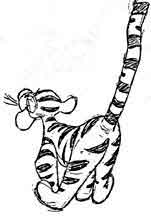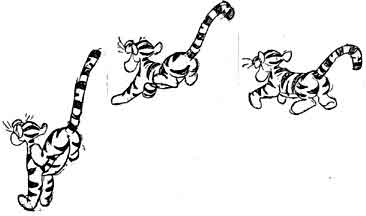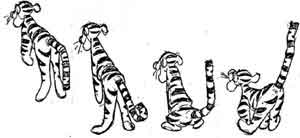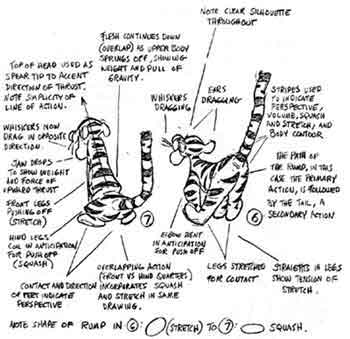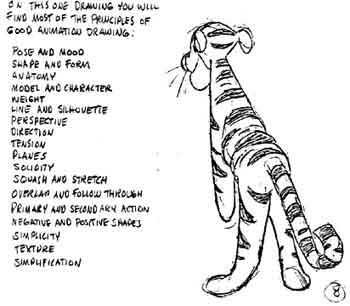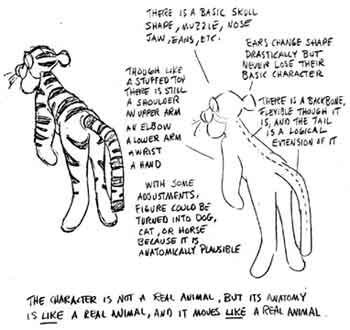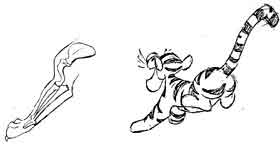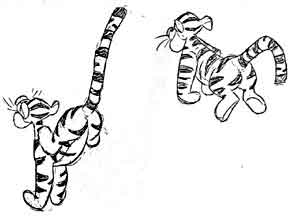
The following is a list of colleges, universities and tech schools with programs that would help someone in their pursuit of a career in the technical direction of the animation industry or the creative side of animation. The list is dedicated to schools that many animation studios feel caters to technical direction and to the more artistic field of character animation

A career in animation is custom made for you. With your bachelor's degree in animation from Westwood College, you'll have the skills to work in the exciting field while doing what you love to do. And your courses are as interesting as your career will be-with classes that incorporate audio/video technology, laws of motion and drawing with general education. Business classes provide you with important skills in critical thinking, logic, communications and problem solving that will help you address workplace challenges. You'll leave qualified for entry-level positions, like web animator, 3D animator/graphic designer, desktop publisher or flash designer/animator.
DeVry's Game and Simulation Programming curriculum prepares graduates to join the private and public sector game software industry in a variety of software development roles across the game programming life cycle, including programmer, software engineer and project coordinator. Applications-oriented, the program provides preparation in the math and physics of games; programming fundamentals; game design; modifications (MOD) and massively multi-player online game (MMOG) programming; two- and three-dimensional graphics programming; and simulation and game engine design. Also included is a full complement of general education courses, recommended by game industry experts as critical for well-rounded development team members.
The Digital Entertainment and Video Game Design program in the School of Drafting and Design at the ITT Technical Institutes can help graduates prepare for career opportunities in a variety of entry-level positions involving the technology associated with the design and development of digital games and multimedia applications. Courses in this program offer a foundation in digital game design through the study of subjects such as gaming technology, game design process, animation, level design and general education coursework.

Graduates of this program may pursue entry-level career opportunities in a number of different digital entertainment and game design companies. Job functions may include working in a team to design, develop, test and produce video games, or create animations and 3D scenes for use in video games.
Animation involves bringing artwork and characters to life with such precision that they truly seem real. Animation is part acting, part storytelling, and part visual art - it's a mix of both electronic arts and traditional animation skills. You'll study methods to create realistic movement in 3-D digital environments, and collaborate within a team environment to gain practical experience. Graduates are prepared to seek entry-level employment such as 3-D character animator, modeler, and storyboarder.
Game Art & Design Program
Graduates are prepared to enter the Game Art and Design field as modelers, storyboard artists, animation artists, 3-D illustrators, digital artists, FX artists, video post-production artists, and broadcast graphics designers, as well as game designers. Learn what it takes to produce great art and design and use the skill to create applications used by the business, education, training and entertainment industries.
Westwood College Online offers a diverse curriculum that focuses primarily on the chosen degree field and is enhanced by general education courses. Students receive a truly comprehensive education; our Game Art & Design Program teaches both Maya and 3DS Max, which allows students to work in their preferred format. Many other video game design programs teach only one of these packages. To top it all off, students get exposure to game engines through our program, and this is certainly a benefit to them.
* Conceptualizing and developing ideas for cartoons and animations
* Using life drawing and rendering techniques to develop characters, backgrounds and stories
* Creating 2D and 3D characters and animation for the Web, digital media, television, movies and software
* Utilizing the laws of motion and physics to create life-like motion for the animated characters you create
* Integrating audio and video effects to create animated features
This is just a highlight of our online animation program. Students are prepared for the challenges of a career and provided with skills to navigate the ever-changing trends in animation. Picture yourself in the creative career you have been dreaming of, and work towards that goal with the help of Westwood College Online!
Learn from industry experts from leading companies such as SEGA, ImageWorks, Disney, and more. We're one of the United States' most technologically equipped digital artist colleges. We have the tools and techniques to empower your creative career.
Take classes in artist-designed labs and facilities. Learn from experts in digital artistry. Work with industry-standard animation tools, 3D software, and imaging technologies. All at DMAC.
An artful blend of creative vision and technology, computer animators work in 3-D to bring their imagination to life. Animators can specialize in motion, feature films, materials, and more. Our new motion capture studio will give you the opportunity to train on the same equipment that's used in major motion pictures. The computer animation program is designed to teach you how to develop drawing skills and combine them with storytelling in the digital realm to acquire the skills you need to help you enter the field of computer animation.
Bachelor - Visual Communications: Game Design
The Bachelor of Fine Arts in Visual Communication (Game Design) is designed to provide training in principles and techniques used to create interactive 2D and 3D computer games. Students can learn design software; modeling and animation skills, networking principles, level and world editors, and game engines used to design and develop games, and will examine market research and business concepts related to game production and distribution processes. Project management, creative design, and communication skills are integrated throughout this dynamic curriculum to help prepare students for entry-level positions in the game design industry.

Our diploma program in 3D Animation for Film, TV & Games focuses primarily on animating characters for film, game and television production.
The department head for our program, Calvin Leduc, has over 20 years experience in the animation & gaming industry, including 9 years at Walt Disney Feature Animation. The program also includes regular live web chats with Pixar animators Andrew Gordon and Mike Venturini, direct from their studio in Emeryville California! Together with additional instructors from Industrial Light & Magic and other studios, our students learn to master their craft and produce a professional demo reel for studio recruitment.
Vanarts is a member of the Softimage Education Partner Program. All students graduating from the 3D Animation Diploma program, will now receive a FREE one year commercial license of the computer animation software SOFTIMAGE/XSI Essentials. This will allow graduates of Vanarts 3D Animation to continue using Softimage/XSI to freelance, to set up their own companies to do commercial work or to keep in practice.
Careers in the 3D Computer Animation field include character and effects animators, modelers, lighting and texture mappers, concept designers and storyboard artists.

The curriculum in our Game Design Program is designed to equip you with game essentials like C++, Java, 3ds max and AI (Artificial Intelligence) so you can make your quest-driven concept a game reality. Your education in Game Design can take you from game research and planning, character development and storytelling, all the way through level design, modeling programming and project management. It takes more than imagination to be a game designer, and we can help you to take your ideas from concept to completion and beyond.
BA Visual Art w/ Game Art Major
As a student, you can learn to create characters and settings that bring a game to life. You can learn the fundamentals of sound design for game projects and explore the workflow concepts behind the art department of a major game studio. You can visualize a concept and acquire the computer skills necessary to render it in 3D.
Enroll in this exciting Visual Arts degree program with a major in Game Art and you'll take classes such as Creative Visualization, Audio for Gaming, Game Design Project Management, 3D Studio Max® 1, and 3D Modeling. Computer labs, traditional animation labs, photo/video labs, and a photography studio lab are available to students who choose this Visual Arts degree program. In approximately 31 months, you can earn a degree to help you enter today's workforce as a Game Designer.
Ex'pression Digital Visual Media Program is designed to enhance your knowledge and skills through an intensive series of courses that cover a wide spectrum of digital visual media including 3D modeling and animation, texture and lighting, compositing, digital film and video effects, creating graphics for the Internet and more. You will gain experiential knowledge through extensive lab time using multiple hardware platforms. A one-to-one (student-to-machine) lab ratio allows you to individually explore the intricacies of a wide variety of graphics software.
The Animation Mentor curriculum has been designed by professionals, working at the top animation studios in the industry, focusing 100% on character animation. This gives our curriculum a "real world" insight into what studios are looking for in new animation talent. At Animation Mentor, students are mentored one-on-one by professional animators from major studios. Our approach prepares students with the skills and attitude they need to take into the studio arena. Our online campus is built with a studio focus in mind, allowing our students to get comfortable with the many challenges and opportunities they will experience when working in a studio environment.
Admissions: (510) 809-1177
3D Modelling Animation Art and Design - Are you passionate about 3D animation? Ready to turn this passion into a fun-filled creative career? In the 3D Modelling Animation Art and Design diploma program at VCAD, you'll learn the tools and develop the skills to succeed in the Computer Generated animation industry.
Career opportunities can be found in a variety of CGI-based industries, including computer animations studios, game development companies as well as post-production and special effects studios. Positions may include 3D modeler, character modeler, technical artist and junior production designer. Employment may also be found at industrial design firms, software producers or other companies that require the production of 3d graphics and animation.











